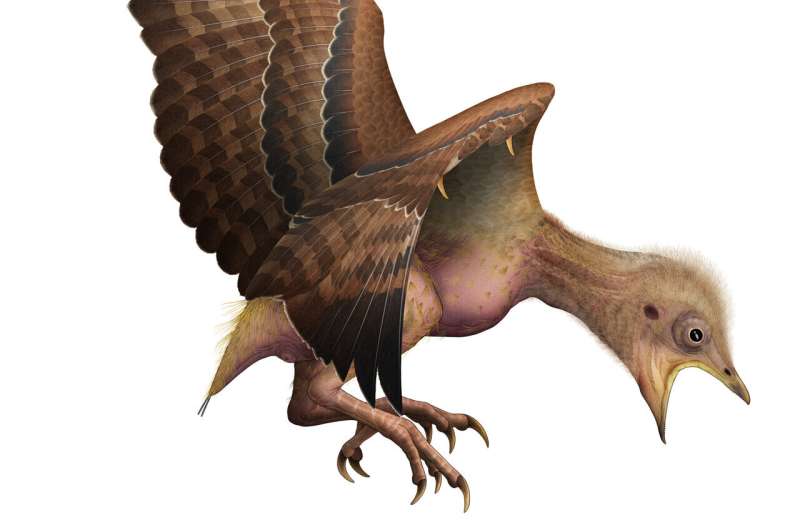What Happens When You Touch a Bird’s Wings: Unveiling the Mysteries
by onleaves

When you touch a bird’s wings, it can cause them stress and harm to their delicate feathers. Birds rely on their wings for flight, balance, and survival, so touching their wings can disrupt their natural abilities and even lead to injury.
It’s important to respect a bird’s personal space and avoid touching their wings to ensure their well-being.
Understanding Bird’S Wings
Understanding the anatomy and structure of birds’ wings is essential to grasp what happens when you touch them. Birds’ wings are fascinating features, perfectly adapted for flight. They consist of several components, including the shoulder joint, wing bones, feathers, and muscles. The wings’ structure allows for impressive flexibility and maneuverability in the air. Feathers play a crucial role in flight, as they provide lift, stability, and insulation. The unique adaptations of bird wings enable them to perform incredible aerial feats, such as soaring, gliding, and intricate maneuvers. Different bird species have variations in their wings, suited to their specific needs and habitats. Whether it’s the soaring wings of a hawk or the agile wings of a hummingbird, birds rely on their intricate wing structure and adaptations to navigate the sky. So, when it comes to understanding birds’ wings, their anatomy and adaptations offer a wealth of insight into their remarkable abilities.
The Functionality Of Bird’S Wings
Bird’s wings are fascinating structures that allow them to perform incredible feats of flight. The functionality of bird’s wings is primarily linked to flight mechanics and wing movements.
Flight mechanics involve a complex interplay between lift, drag, and thrust. Birds generate lift by creating a pressure difference between the upper and lower surfaces of the wing. This is achieved through the unique shape and curvature of their wings.
Wing movements play a crucial role in controlling flight maneuvers. Birds use a combination of flapping, gliding, soaring, and hovering to navigate the skies. Flapping involves a rhythmic motion of the wings, generating both lift and thrust. Gliding and soaring allow birds to conserve energy by utilizing air currents and updrafts.
Feathers, an essential component of bird’s wings, also contribute to their flight ability. Feathers are lightweight, yet sturdy, providing structural support and aiding in aerodynamics.
| Functionality of Bird’s Wings | |
|---|---|
| Flight Mechanics | Wing Movements |
| – Lift and drag | – Flapping |
| – Wing shape and curvature | – Gliding and soaring |
Bird wings are marvels of nature, allowing these creatures to soar through the sky with grace and agility.
Interactions With Bird’S Wings
| Interactions with Bird’s Wings |
|---|
| Birds use their wings not only for flying but also for communication purposes. When it comes to human interactions with bird’s wings, it is important to approach with caution, as touching and holding a bird’s wings can cause harm or stress to the bird. Birds rely on their wings for various activities, such as foraging, mating displays, and signaling danger. Their wings are a vital part of their communication system, as they use different wing movements, postures, and displays to convey messages to other birds. Additionally, birds often use their wings to intimidate or ward off potential threats. Therefore, it is crucial to respect their personal space and avoid any impacts that may disrupt their natural behaviors. By being mindful of these interactions, we can ensure a safe and respectful approach to birds and their wings. |
Impact Of Touching A Bird’S Wings
Touching a bird’s wings can have detrimental effects on both their physical health and psychological well-being. Physically, birds rely heavily on their wings for flight, balance, and navigation. Any disruption or injury to their wings can impair their ability to perform these vital functions. Even a slight touch can cause stress and potential damage to the delicate structure of their feathers and bones.
Beyond the physical impact, touching a bird’s wings can also have psychological consequences. Birds are instinctively cautious and wary of potential threats. When touched by humans, they can become stressed and anxious, which can disrupt their natural behaviors and lead to long-term psychological distress.
It is important to remember that birds are wild animals and should be observed from a distance, respecting their natural habitats and behaviors. Interacting with birds in a way that respects their physical and psychological well-being is essential for their overall health and conservation.
Ethical Considerations
Respecting Boundaries: Guidelines for Interacting with Birds
When it comes to touching a bird’s wings, ethical considerations play a crucial role. As advocates for bird conservation and avian protection, it is our responsibility to ensure we respect their boundaries when engaging with these magnificent creatures. Interacting with birds requires adherence to certain guidelines:
| 1. Approach with Caution | When encountering birds, it’s essential to approach them slowly and calmly, allowing them to become familiar with your presence. |
| 2. Hands-Off Approach | Avoid touching a bird’s wings as it can cause stress, injury, or damage to their delicate feathers, which are vital for their survival. |
| 3. Respect Personal Space | Maintain a respectful distance from birds and avoid encroaching on their territory to prevent distress or disruption to their natural behaviors. |
| 4. Observe from Afar | Enjoy observing birds in their natural habitat using binoculars or a camera lens, ensuring minimal disturbance to their surroundings. |
| 5. Support Conservation Efforts | Contribute to bird conservation initiatives through donations, volunteering, or supporting organizations that work towards protecting avian species. |
| 6. Educate Others | Spread awareness about the importance of ethical bird interaction and share these guidelines with others to promote responsible behavior. |
By adhering to these guidelines, we can appreciate birds’ beauty and marvel while ensuring their well-being remains a top priority.
The Science Of Birds’ Wings
Touching a bird’s wings may have detrimental effects on the delicate structures that enable their flight. Scientific studies have explored the consequences of wing touching, revealing significant findings. Researchers have observed that wing handling can disrupt the alignment of feathers, leading to impaired flight performance in birds. Moreover, excessive or forceful touching can cause feather damage, resulting in compromised insulation and flight capabilities.
One study conducted on pigeons showed that wing touches led to increased preening and feather realignment, indicating a response to potential harm. Additionally, wing touching has been found to induce physiological stress responses in birds, such as elevated heart rate and corticosterone levels. These findings underscore the importance of maintaining respectful distances when encountering birds in their natural habitats, providing them with the space they need to thrive.
By being mindful of the vulnerability of a bird’s wings, we can contribute to their overall well-being and preserve the marvel of avian flight.
Misconceptions And Myths
Unraveling Common Misbeliefs about Touching Bird’s Wings |
|
|
When it comes to touching a bird’s wings, there are several misconceptions and myths that have been perpetuated through cultural perceptions and superstitions. It is important to debunk these beliefs and uncover the truth about interacting with these magnificent creatures. One common myth is that if you touch a bird’s wings, it will lose the ability to fly. However, this is not true. Birds have a remarkable regenerative capacity, and a gentle touch or brief interaction is unlikely to cause any harm to their wings. Moreover, another misconception is that touching a bird’s wings is considered bad luck or brings about negative consequences. These beliefs often stem from cultural superstitions and should be approached with skepticism. By unraveling these common misbeliefs, we can encourage a more informed and respectful interaction with birds. It is important to handle them with care and avoid unnecessary stress, but a gentle touch or safe interaction can offer a closer connection to the natural world. In conclusion, it is crucial to understand that interacting with a bird’s wings is not inherently harmful or taboo. By dispelling these myths, we can foster a greater appreciation for these remarkable creatures and promote responsible engagement with wildlife. |
|

Credit: phys.org
How To Support Birds Without Touching Their Wings
How to Support Birds Without Touching Their Wings
Creating a bird-friendly environment is a crucial step in contributing to bird conservation efforts. By making small changes to our surroundings, we can provide the necessary support to birds without interfering with their wings. One effective way is to create a habitat that offers a diverse range of native plants, which attract a variety of bird species. Providing food sources, such as bird feeders or bird baths, can also be immensely helpful. Additionally, avoiding the use of chemicals, pesticides or harmful substances in your yard ensures a safe space for birds to inhabit. If you have large windows, consider placing decals or blinds to prevent collisions. Remember to maintain a respectful distance from bird nests, as disturbing them can have negative consequences. Remember, every little effort counts in creating a conducive environment for our feathered friends.
Frequently Asked Questions Of What Happens When You Touch A Bird’S Wings
Does Touching A Bird’S Back Turn Them On?
Touching a bird’s back does not turn them on.
Are Birds Wings Sensitive?
Yes, bird wings are sensitive due to the presence of specialized nerve endings.
Where Should You Not Touch Your Bird?
Avoid touching your bird’s sensitive areas such as wings, tail feathers, beak, and underbelly.
Can You Touch Parrots Wings?
Yes, you can touch a parrot’s wings.
Conclusion
Touching a bird’s wings can have serious consequences for their health and well-being. Birds rely on their wings for flight, and any injury or distress to their wings can hinder their ability to survive in the wild. When we touch a bird’s wings, we risk causing damage to their delicate feathers and joints, which can affect their ability to fly, hunt, and communicate with other birds.
Additionally, our touch can transfer oils or chemicals from our hands onto their feathers, interfering with their waterproofing abilities and leaving them vulnerable to environmental hazards. It’s important to respect birds’ natural behaviors and keep a safe distance to ensure their safety and the preservation of their natural habitats.
By observing birds from a distance and appreciating their beauty without physical contact, we can help protect these amazing creatures and encourage their continued presence in our world. Let’s remember that the best way to appreciate birds is to enjoy their presence from afar, leaving them undisturbed in their natural environment.
When you touch a bird’s wings, it can cause them stress and harm to their delicate feathers. Birds rely on their wings for flight, balance, and survival, so touching their wings can disrupt their natural abilities and even lead to injury. It’s important to respect a bird’s personal space and avoid touching their wings to…
Recent Posts
- Financial Success with Nivesh Mitra: Your Trusted Investment Companion
- Manav Sampada Portal at ehrms.upsdc.gov.in for Viewing the E-Service Book
- School Insights Navigate Shala Darpan with Staff Login @ rajshaladarpan.nic.in
- Maharashtra Employment 2023: Register Online for Job Opportunities
- Empower Your Career: Navigating the Employment Exchange for Success





